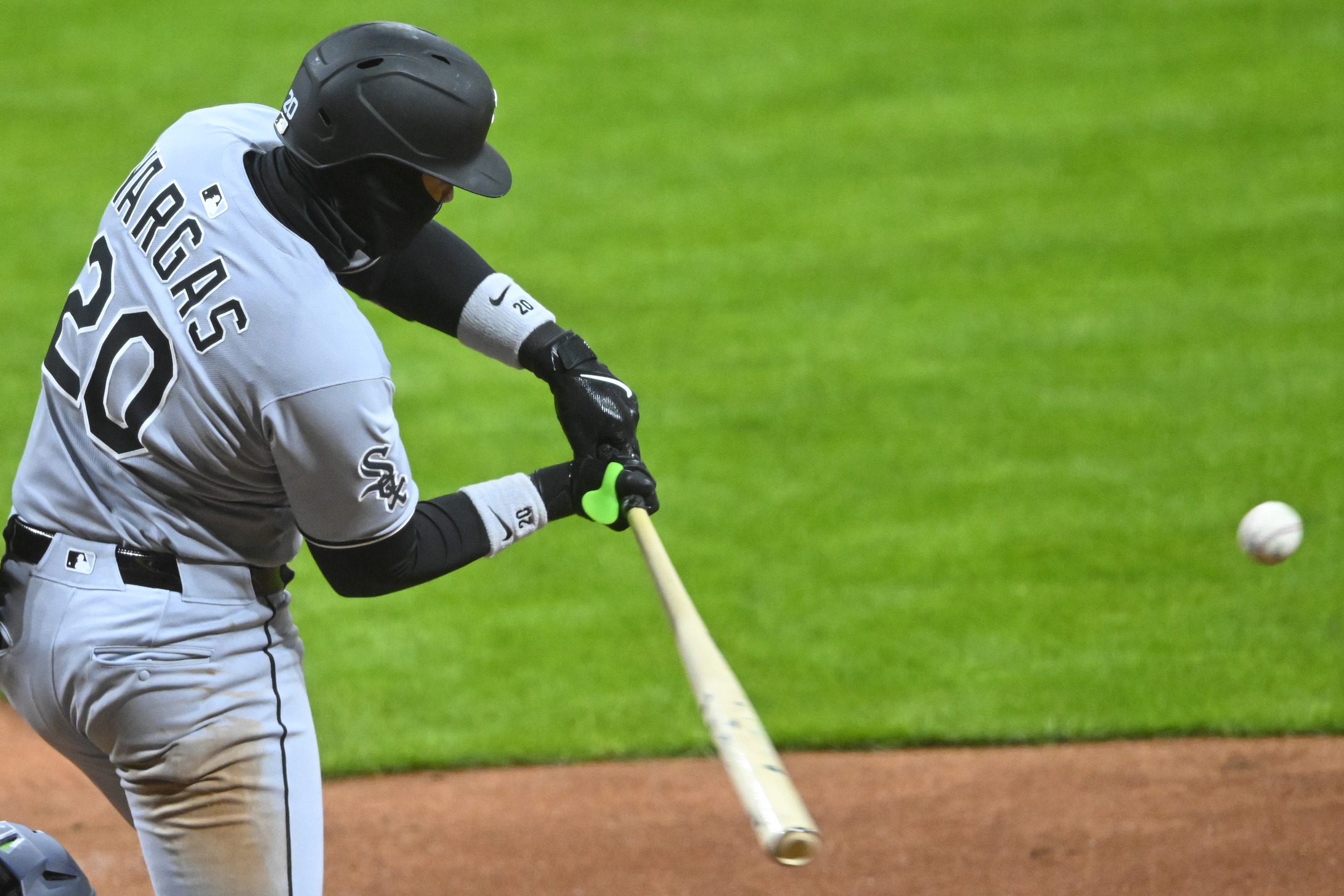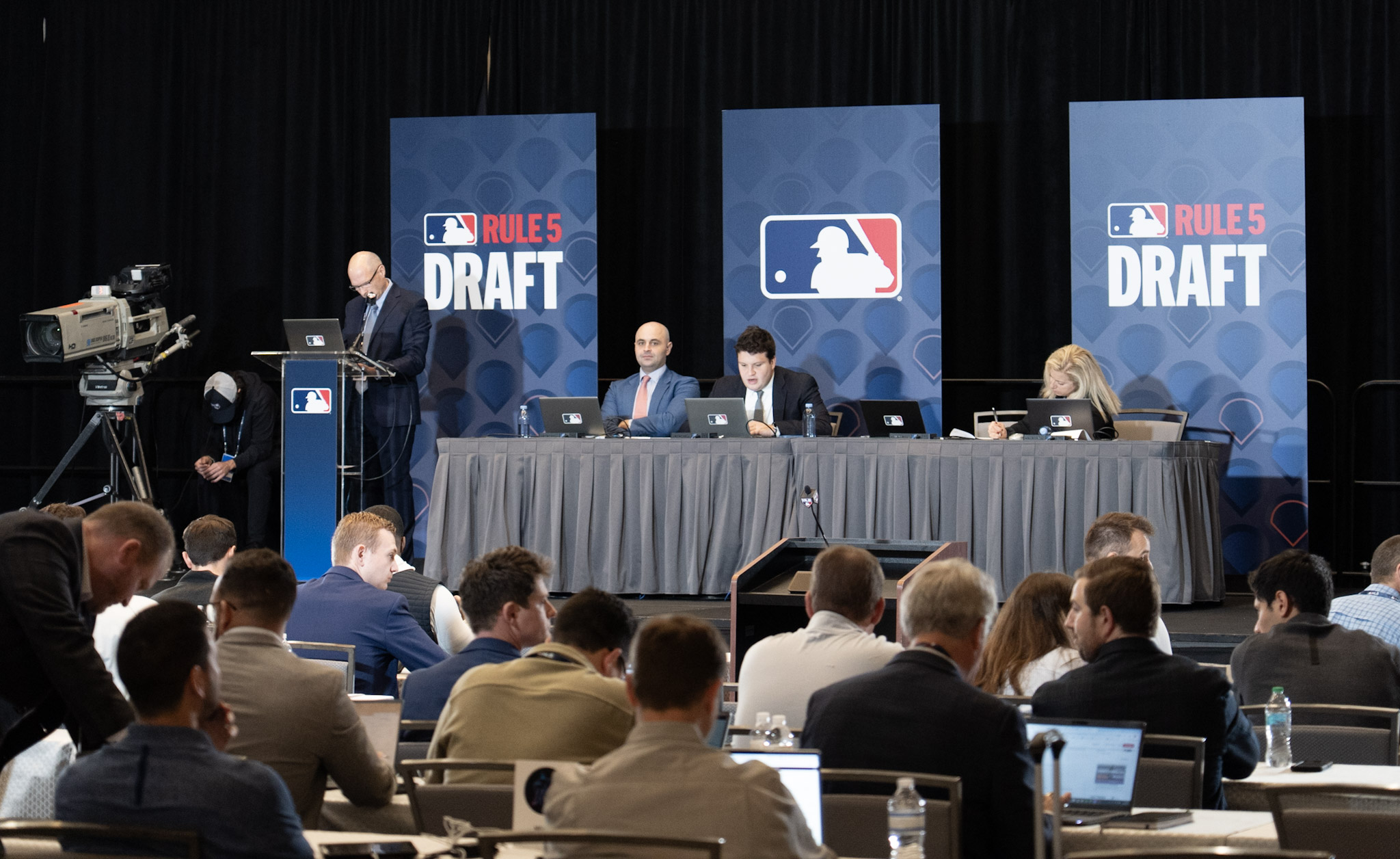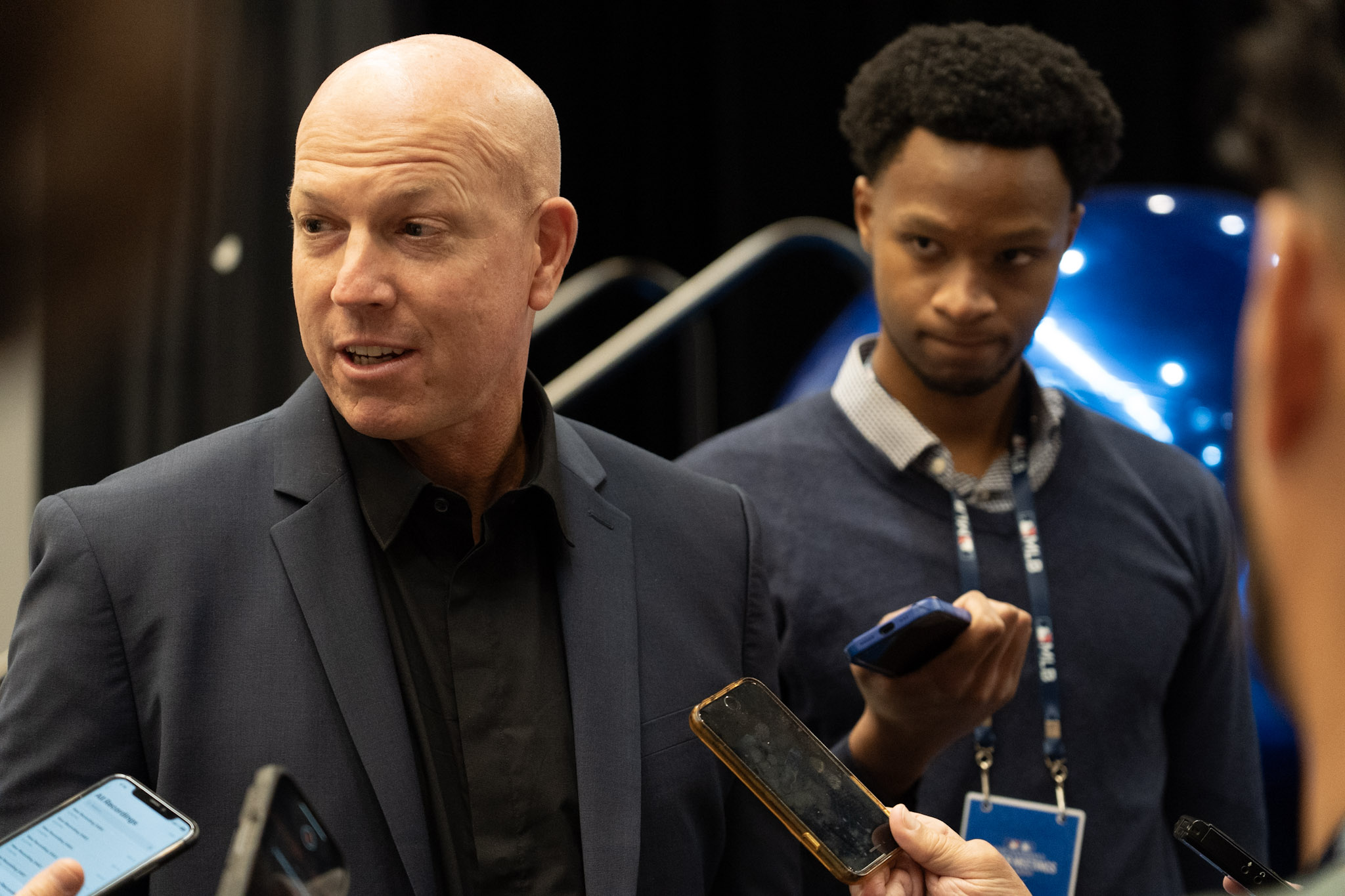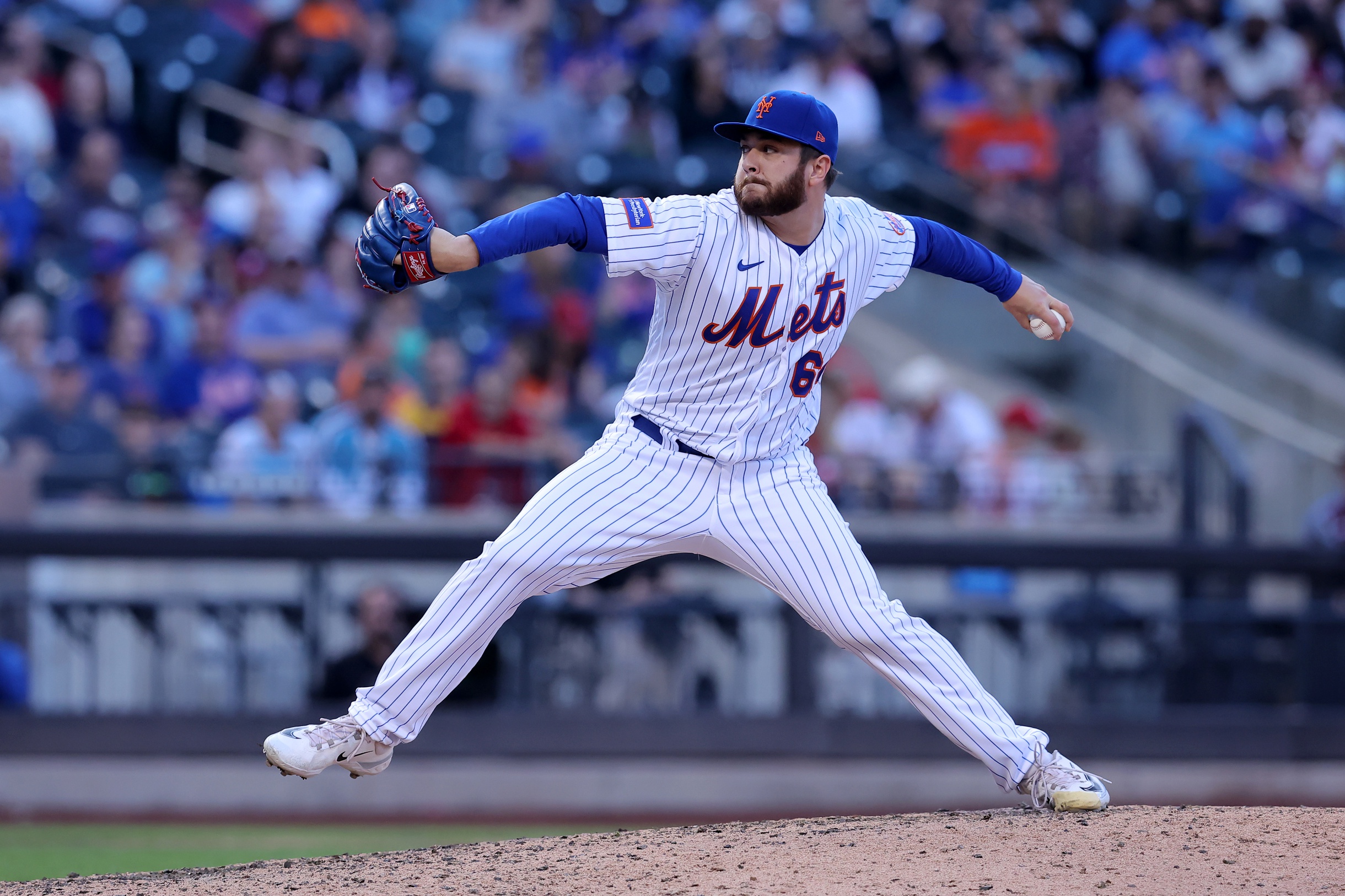Before getting optimistic about a rosy future for Miguel Vargas' hitting mechanics in a White Sox uniform, it's important to review their increasingly lengthy past.
Sox hitting coach Marcus Thames was doing battle with an excessively large hand load in Vargas' swing last year. Even if weight and strength loss was the larger issue, the extra draw down motion was a symptom of it, as the young third base loaded up for impact he wasn't producing organically. Vargas arrived in camp this spring 20 pounds heavier, but also with his hands newly set lower and out in front of his body, discouraging extra movement by shortening the journey to his swing path.
This is a story about an offensive adjustment Vargas has made that is seemingly paying immediate dividends, but there has already been some paint spilled on this canvas, so to speak. A struggling hitter making periodic changes looks like tinkering. A hitter who capped an eight-game hitting streak with a game-breaking three-run homer on Thursday looks like someone taking necessary steps to a better present.


There's no mystery here: Vargas lifted his hands up in his setup. The man himself says it's still different from what he was doing early in 2024, but it's certainly closer and a less radical shift away from what Vargas looked like as a top prospect in the Dodgers system.
The clarity of what changed and when makes it not only easy to find the switch in still images, but also track his results. Vargas was hitting .139/.236/.203 before he changed his placement, and is hitting .400/.488/.600 with six walks, four strikeouts and two homers in an eight-game hitting streak in 10 games since. It goes without saying that the BABIP Gods are smiling when someone piles up 14 hits and only three go for extra bases, but this is essentially the first burst of positive offensive results in Vargas' White Sox tenure.
"A little over a week ago, we didn't know which direction this was going to go, but he's really squared up a lot of baseballs," said Chris Getz, candidly revealing internal uncertainty about a major acquisition. "He's getting to fastballs, driving it to all parts of the field. That's certainly an indication of good things happening."
Naturally, the real question is ... why?
"Just trying to get better, more ready against fastballs," Vargas said, as a Bob Marley song blared loudly behind him in the visitors clubhouse in West Sacramento. "It's the same thing I've been doing all offseason, trying to get a little bit better against velocity."
More so, velocity in a specific location.
"[He's] able to have where his hands could go to with his first move stay a little bit higher, to cover the top part of the zone," said director of hitting Ryan Fuller. "When [opposing pitchers] were going high...his barrel was underneath. He crushed the bottom part of the zone, but a pretty good hole in that middle, top part, where he was getting attacked."
Drilling down further to the issue of fastballs in the top two-thirds of the strike zone, and throwing in some spring training games that Synergy Sports has some data on, Vargas batted .200 with a .240 slugging percentage on such pitches before the change. He also just straight-up whiffed on them at a 24 percent clip -- decidedly not great considering the typically crushable thigh-to-belt high heaters are included in the sample.
The sample size for the new Vargas setup is tiny to the point of meaninglessness, but that his whiffs have immediately almost been cut in half signals a step in the right direction.
"Usually you make a change, you have two weeks where it’s kind of, ‘Eh, ok, getting there,’ then you have that upward trend," Fuller said. "For him to have success right away helps us know it’s going to be a better choice for him. In Minnesota, the ball he hit to third base, it was the hardest-hit ball at the top part of the zone he hit all year. Those are the encouraging signs, knowing we are working on the right things. Will there be struggles? Of course there will. But knowing we are covering up a spot in the zone, we need to be really happy with that."
His chase rate has remained microscopic, but the benefits of Vargas' trained batting eye don't really show up if any elevated fastball can put him away. Even if they haven't all come on heaters, half of Vargas' 10 hardest-hit balls of the season, both of his home runs this year, and his first 110+ mph contact in a White Sox uniform, have all come since the hand position switch. That adds a little heft to the biggest swing of his season only producing 94.6 mph off the bat, but how hard is anyone supposed to hit a changeup at their knees?
Miguel Vargas extends his hit streak to eight games with a 3-run shot! pic.twitter.com/4pFvw7VrjM
— White Sox on CHSN (@CHSN_WhiteSox) May 1, 2025
"He's instantly been able to hit balls with more authority and put some balls in play where he might have been putting them in play softly, or even fouling them back before," said Will Venable. "We've seen the consistent approach where he's had good plate discipline this whole year, and now for him to move some of these balls forward with authority, it's awesome to see him get those results."
Vargas' defensive improvement might still be his most significant development of the season to date. Until he continues to prove otherwise, he's a hit-over-power third baseman and being an above-average defender will be crucial to making such a profile work. The top seven third baseman in the league by FanGraphs' WAR all hit 20 homers or more for the last three years in a row, and it's long road still to establishing what kind of staying power Vargas can have with a game that looks different from the best at his position.
Which is all to say that perhaps more interesting than Vargas himself, is that it serves as an example of what Fuller foreshadowed in spring. He said that the team would be leaning on staff biomechanist Aaron Trunt to provide insight to the coaching staff on what sorts and sizes of mechanical changes different hitters would be able to successfully employ.
"It’s a credit to Aaron, our biomechanist, Marcus [Thames], Joel [McKeithan] working together, putting a plan in place," Fuller said. "Here’s an issue, we believe it’s going to continue to be an issue with four-seamers, anything in the middle, top of the zone. Let’s make a change. We all believe in it. The real credit goes to Vargy, saying, ‘Ok, this is something I need to work at. I have to make an adjustment.’"
As the headliner of a divisive deadline trade last July, coming over from an organization the White Sox can only seek to emulate, Vargas' progress was already a measure of the franchise's capabilities. But now the best-case scenario for him is more: a preview of how they'll address other struggling hitters. We all know there are plenty of candidates.





